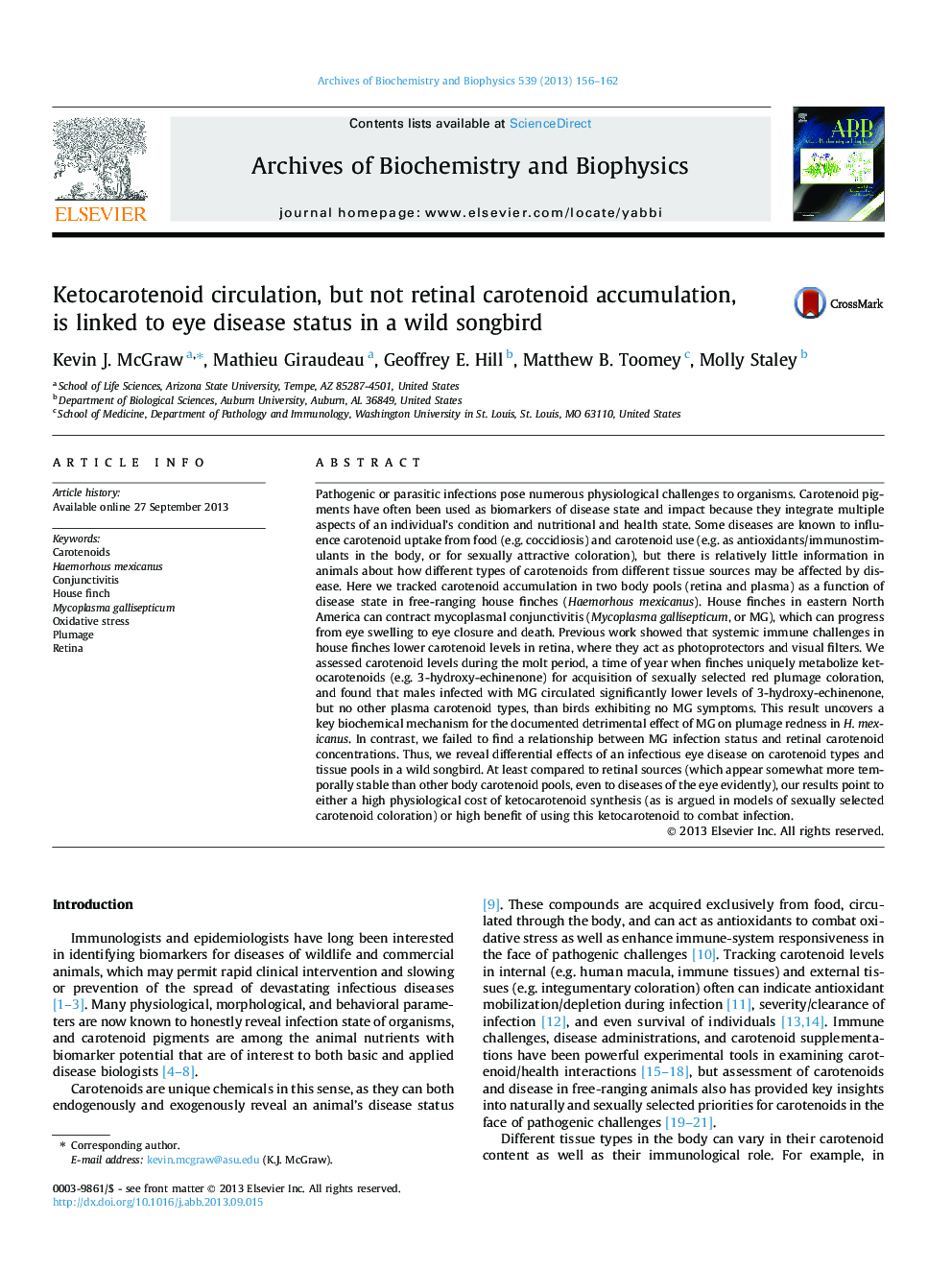| کد مقاله | کد نشریه | سال انتشار | مقاله انگلیسی | نسخه تمام متن |
|---|---|---|---|---|
| 1925308 | 1536360 | 2013 | 7 صفحه PDF | دانلود رایگان |

• We studied how an eye disease affects carotenoid status in a wild bird species.
• We used HPLC to measure carotenoids in blood and retina of house finches.
• Birds with mycoplasmosis circulated lower levels of a red ketocarotenoid.
• Eyes of sick and healthy finches did not differ in levels of retinal carotenoids.
Pathogenic or parasitic infections pose numerous physiological challenges to organisms. Carotenoid pigments have often been used as biomarkers of disease state and impact because they integrate multiple aspects of an individual’s condition and nutritional and health state. Some diseases are known to influence carotenoid uptake from food (e.g. coccidiosis) and carotenoid use (e.g. as antioxidants/immunostimulants in the body, or for sexually attractive coloration), but there is relatively little information in animals about how different types of carotenoids from different tissue sources may be affected by disease. Here we tracked carotenoid accumulation in two body pools (retina and plasma) as a function of disease state in free-ranging house finches (Haemorhous mexicanus). House finches in eastern North America can contract mycoplasmal conjunctivitis (Mycoplasma gallisepticum, or MG), which can progress from eye swelling to eye closure and death. Previous work showed that systemic immune challenges in house finches lower carotenoid levels in retina, where they act as photoprotectors and visual filters. We assessed carotenoid levels during the molt period, a time of year when finches uniquely metabolize ketocarotenoids (e.g. 3-hydroxy-echinenone) for acquisition of sexually selected red plumage coloration, and found that males infected with MG circulated significantly lower levels of 3-hydroxy-echinenone, but no other plasma carotenoid types, than birds exhibiting no MG symptoms. This result uncovers a key biochemical mechanism for the documented detrimental effect of MG on plumage redness in H. mexicanus. In contrast, we failed to find a relationship between MG infection status and retinal carotenoid concentrations. Thus, we reveal differential effects of an infectious eye disease on carotenoid types and tissue pools in a wild songbird. At least compared to retinal sources (which appear somewhat more temporally stable than other body carotenoid pools, even to diseases of the eye evidently), our results point to either a high physiological cost of ketocarotenoid synthesis (as is argued in models of sexually selected carotenoid coloration) or high benefit of using this ketocarotenoid to combat infection.
Journal: Archives of Biochemistry and Biophysics - Volume 539, Issue 2, 15 November 2013, Pages 156–162